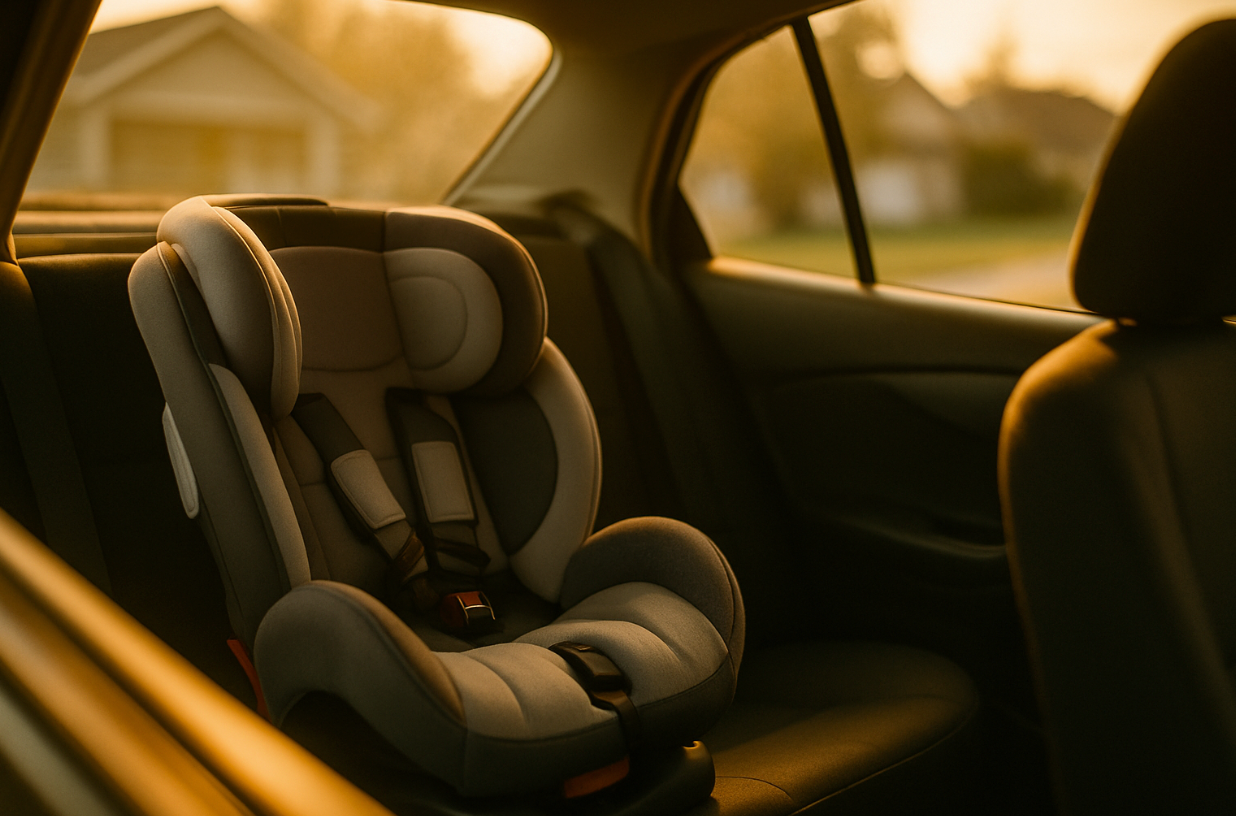Every year, dozens of children die from vehicular heatstroke after being accidentally left in cars. These tragedies rarely happen because parents don’t care, but because our brains can only hold 7-8 pieces of information at once. In this article, we explore why these incidents occur, what happens to a child in a hot vehicle, and how simple reminder strategies can bridge that memory gap and save precious lives.
What Causes a Baby to Die in a Hot Car?
Children under two overheat far more quickly than adults due to:
-
Immature thermoregulation: They sweat less and can’t cool down effectively.
-
Rapid dehydration: Losing fluids under rising temperatures stresses their bodies.
-
Small bodies, big heat gain: Core temperature exceeds 104 °F quickly, 9triggering heatstroke.
Within minutes, a child’s temperature can spike to 107 °F, often proving deadly because their developing organs simply cannot cope with such rapid heat buildup.
How Many Children Die Each Year?
Tragic cases happen nationwide:
-
In Texas, three children died within four days this July after being left alone in hot cars.
-
The U.S. average is 40 pediatric heatstroke deaths per year, nearly one child every ten days.
Each statistic represents a family’s devastating loss and underscores the need for better preventive habits.
How Hot Is Too Hot Inside a Parked Car?
Even on mild days, danger mounts fast:
-
Interior temperatures can rise 20 °F in just 10 minutes, even with cracked windows.
-
Heatstroke risk begins at 104 °F; reaching 107 °F is typically lethal.
-
Children have suffered vehicular heatstroke at 80 °F outside, with documented harm at 57 °F ambient.
These data points make clear that no amount of window cracking guarantees safety. Once heat enters the cabin, it escalates quickly.
Bridging the Memory Gap with Simple Reminders
Our brains juggle only seven to eight bits of information at once. Under stress or routine changes, vital intentions can slip away. These low-tech strategies interrupt autopilot and refocus attention:
-
Sense-Based Cues
-
Phone on the backseat: Place your phone beside your child. The extra weight or vibration when you reach for your phone forces you to look back.
-
Shoe trick: Leave one shoe in the seat next to your child. You won’t exit wearing only a single shoe, prompting a backseat check.
-
Voice Reminders
-
Recorded memo: Record a brief message, “Check the backseat, baby Mia”, and set it to play through your car’s Bluetooth when you turn off the engine.
-
Unexpected audio cue: Hearing your own voice in that moment snaps you out of autopilot and brings your focus back to the interior.
These prompts create a break in routine, forcing the brain to reevaluate and remember the child before leaving the vehicle.
Take Action Today
Building life saving habits requires consistency. Just as buckling a seatbelt became automatic, simple reminders can become second nature:
-
Try one strategy this week (phone or shoe cue) and note the difference.
-
Share your experience with friends, family, and caregivers.
-
Forward this article to anyone who drives with children.
By building these tiny pauses into our routine, we turn forgetfulness into foresight, and give every child a safer tomorrow.

